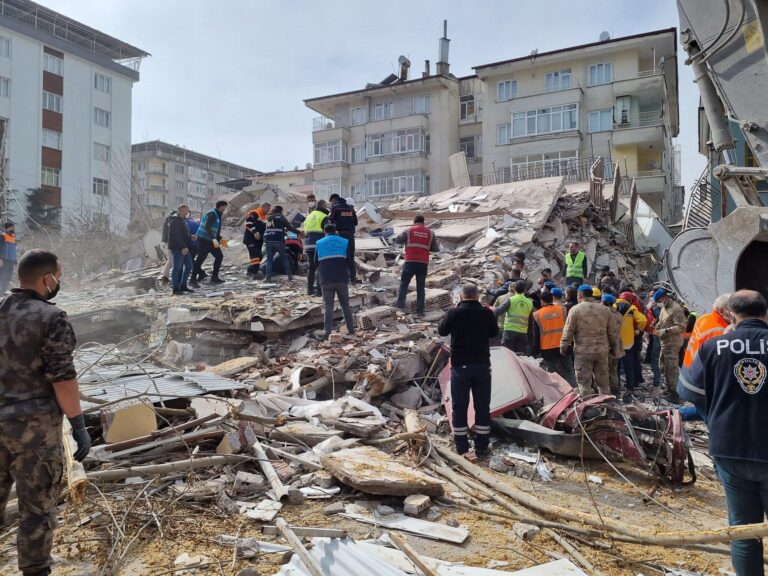Significant 5.2-Magnitude Earthquake Strikes Julian in San Diego County
Late Monday night, the tranquil mountain town of Julian experienced a notable seismic event, as a 5.2-magnitude earthquake jolted the area, prompting swift emergency responses throughout San Diego County. According to the United States Geological Survey (USGS), the quake originated roughly 7 miles beneath the surface, with its epicenter located about 5 miles northeast of Julian, a town known for its rich gold-mining heritage. Residents described feeling the earth tremble, with windows shaking and household items rattling, though no serious injuries or significant structural failures have been confirmed at this time.
Officials have urged the community to stay alert and adhere to recommended safety measures, which include:
- Conducting thorough home inspections to identify any cracks or loose fixtures
- Verifying and replenishing emergency supply kits with necessary provisions
- Refraining from travel on roads until they have been officially deemed safe
- Keeping updated through trusted news sources and official notifications
| Parameter | Details |
|---|---|
| Magnitude | 5.2 |
| Depth | 7 miles |
| Epicenter | 5 miles NE of Julian |
| Time | 10:45 PM PDT |
| Aftershocks | Minor, all below magnitude 3 |
Evaluating Structural Damage and Community Effects in Julian
Following the 5.2-magnitude tremor, local engineers and safety officials have initiated comprehensive inspections to determine the extent of damage across Julian’s historic district. Preliminary findings indicate that older buildings, especially those erected prior to the adoption of modern seismic standards, have sustained varying degrees of harm. Wooden residences reported issues such as foundation fissures and drywall splits, while brick and stone structures exhibited damage to chimneys and exterior facades.
The earthquake’s repercussions extend beyond physical damage, affecting daily life and infrastructure. Power interruptions and communication breakdowns have disrupted business operations and complicated emergency coordination. Many residents expressed increased anxiety, with some opting for temporary relocation as a precaution. The town’s emergency management has circulated detailed instructions focusing on:
- Precautions against potential aftershocks
- Guidance on detecting concealed structural issues
- Information on local aid and recovery resources
| Type of Damage | Structures Affected | Damage Level |
|---|---|---|
| Foundation Cracks | Residential Properties | Moderate |
| Chimney Deterioration | Historic Structures | Minor to Moderate |
| Electrical Outages | Entire Community | Widespread |
Coordinated Emergency Response and Safety Measures
In the immediate aftermath of the earthquake, emergency services in San Diego County rapidly deployed teams including firefighters, paramedics, and police officers to evaluate damage, assist those affected, and secure vulnerable zones. Temporary shelters were established promptly to support families displaced by the quake, while utility providers focused on restoring electricity and water to critical areas. Collaboration with state and federal agencies has been ongoing to streamline relief operations and resource allocation.
- Evacuation pathways were clearly designated and monitored to ensure safe transit for residents and emergency personnel.
- Structural safety checks commenced immediately on public institutions such as schools, hospitals, and government buildings to mitigate further risks.
- Emergency communication lines were activated to offer residents timely updates and assistance.
| Safety Initiative | Status | Response Time |
|---|---|---|
| Emergency Shelter Activation | Operational | Within 2 Hours |
| Priority Power Restoration | Ongoing | High Priority |
| Community Alert System | Active | Immediate |
Earthquake Preparedness Strategies for Residents in Seismic Zones
Individuals residing in earthquake-prone regions should develop comprehensive emergency plans that include clear communication methods and designated meeting spots for family members. Securing heavy furniture and appliances to walls can significantly reduce injury risks and property damage during tremors. Maintaining a well-stocked emergency kit containing essentials like water, non-perishable food, flashlights, batteries, and first aid materials is vital. Regularly practicing earthquake drills, such as the “Drop, Cover, and Hold On” technique, enhances readiness for sudden seismic events.
Additional Recommendations for Improved Safety:
- Identify and familiarize yourself with safe indoor locations, such as sturdy tables or interior walls away from windows.
- Store important documents in waterproof, portable containers for quick access.
- Install automatic gas shut-off valves to minimize fire hazards post-earthquake.
- Stay connected through local emergency alerts and seismic monitoring applications.
| Preparedness Activity | Objective | Suggested Frequency |
|---|---|---|
| Earthquake Drill | Enhance response skills | Quarterly |
| Emergency Kit Review | Maintain supply readiness | Biannually |
| Home Safety Audit | Identify and fix hazards | Annually |
Final Thoughts on the Julian Earthquake Response
As officials continue to evaluate the aftermath of the 5.2-magnitude earthquake that struck Julian, California, residents are encouraged to stay alert and comply with safety instructions issued by local authorities. Emergency teams remain vigilant, monitoring for aftershocks and addressing infrastructure concerns to safeguard the community. For ongoing updates and detailed coverage, stay connected to NBC News and other trusted sources.







